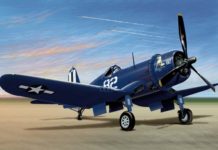One frustrating problem facing the planners of Operation Husky was the fact that Sicily, sitting like a stepping stone between North Africa and the Italian mainland, was just too obvious a target. “Anybody but a damn fool would know it was Sicily,” British Prime Minister Winston Churchill observed.
Lieutenant Commander Ewen Montagu, an attorney turned British Naval Intelligence officer, thought he had the solution. “Why shouldn’t we get a body, disguise it as a staff officer, and give him really high-level papers which will show clearly that we are going to attack somewhere else?” Montagu pondered.
Thus was born Operation Mincemeat and Captain (Acting Major) William Martin, Royal Marines, now known as “the man who never was.”
As Montagu later wrote, his plan called for letting the corpse of a high-level courier, apparently drowned at sea after a plane crash, wash ashore in ostensibly neutral Spain where German agents were known to operate.
Working on the advice of a pathologist, Montagu said he located a victim of pneumonia; the fluid left in the body’s lungs could be mistaken for sea water. The victim’s family agreed to allow the use of the body for “special medical purposes” on the condition that his true identity was never revealed.
With the corpse preserved in dry ice, Montagu’s XX (Double Cross) Committee in London built Major Martin’s identity. He was dressed in a Royal Marine uniform that was pre-torn and pre-soaked in sea water. Letters from a fiancée, a disapproving father, theater ticket stubs, and bank overdraft statements added to his personality.
Photographing a Corpse
Martin’s identity papers provided the first stumbling block. “I defy anyone to take a photograph of someone who is dead and make it look as he could conceivably be alive,” Montagu wrote after the war. Chance provided the solution: at a meeting, Montagu met a man “who might have been the twin brother of the corpse.”
Strapped to Major Martin’s waist was a courier’s briefcase containing papers hinting at an Allied invasion in Greece and Sardinia. The two made believable targets; from there Allied troops could push north through the Balkans to threaten the German southern flank in Russia.
On April 30, 1943, sailors aboard the submarine HMS Seraph lowered Major Martin’s body into the ocean a few miles off the Spanish coastal city of Huelva. Less than two hours later, the body was discovered by a fisherman who took it ashore.
Days later, British Embassy staff retrieved Martin’s briefcase from the Huelva coroner. Microscopic examination showed the case had been opened and its papers examined. Two weeks later, German Admiral Karl Doenitz wrote in his diary: “The genuineness of the captured documents is above suspicion.”
More importantly, the papers convinced Adolf Hitler. Despite the concerns of his generals in Italy, Hitler ordered troops rushed from France, Russia and Sicily to reinforce Corsica, Sardinia, Greece and the Balkans.
The Debate Begins
The body of “Major Martin” was buried in Huelva with full honors. Montagu never revealed his real identity.
Martin’s true name remained a mystery until 1996 when amateur historian Roger Morgan deduced the major was, in fact, Glyndwr Michael, a homeless Welshman who died after ingesting rat poison.
However, in 2003 a documentary on the sinking of the HMS Dasher, a British aircraft carrier that sank mysteriously during WWII, claimed Major Martin was actually John Melville, a Dasher crewman who drowned during the sinking.
Seven years later, historian Denis Smyth, author of Deathly Deception: The Real Story of Operation Mincemeat, cited a formerly top secret memo written by Montagu identifying the corpse as the Welshman Glyndwr Michael.
That, however, did not put the matter to rest. John Steele, author of The Secrets of HMS Dasher, published in 2002, insisted Michael would not have passed muster as a Marine because he was an alcoholic.
“I’ve received a comprehensive report from a top dental expert regarding the teeth of Glyndwr Michael, what he would expect to find,” Steele told the London Telegraph in 2010. “There is no comparison whatsoever between the body of an alcoholic tramp and that of a Royal Marine.”
Nevertheless, the official stance of the British Defense Ministry and the Royal Navy remains that Major Martin was, in fact, Glyndwr Michael. With all probability, the “Man Who Never Was” will never really be known.








